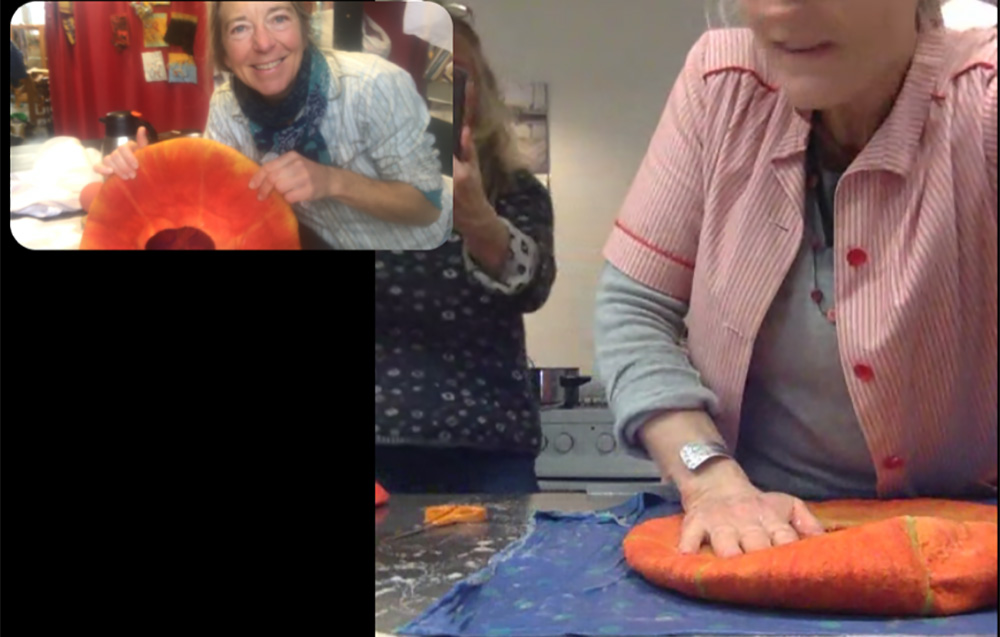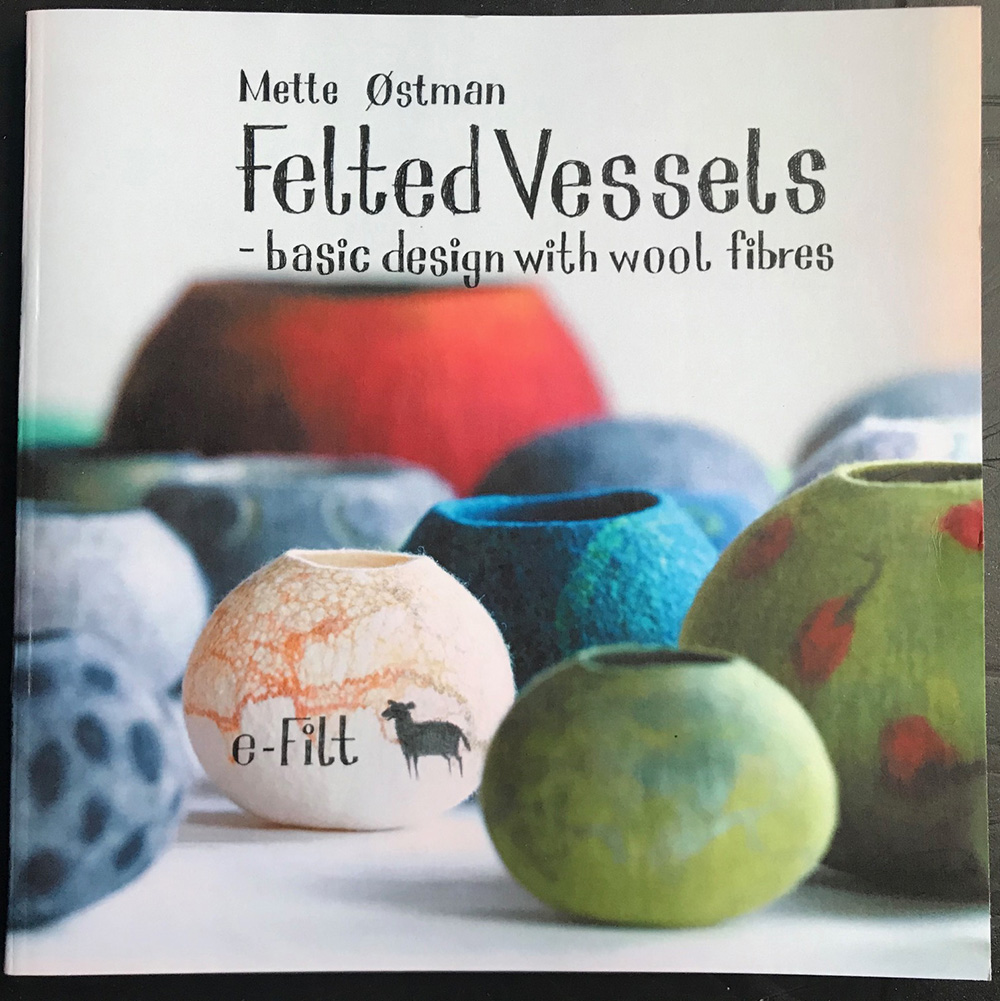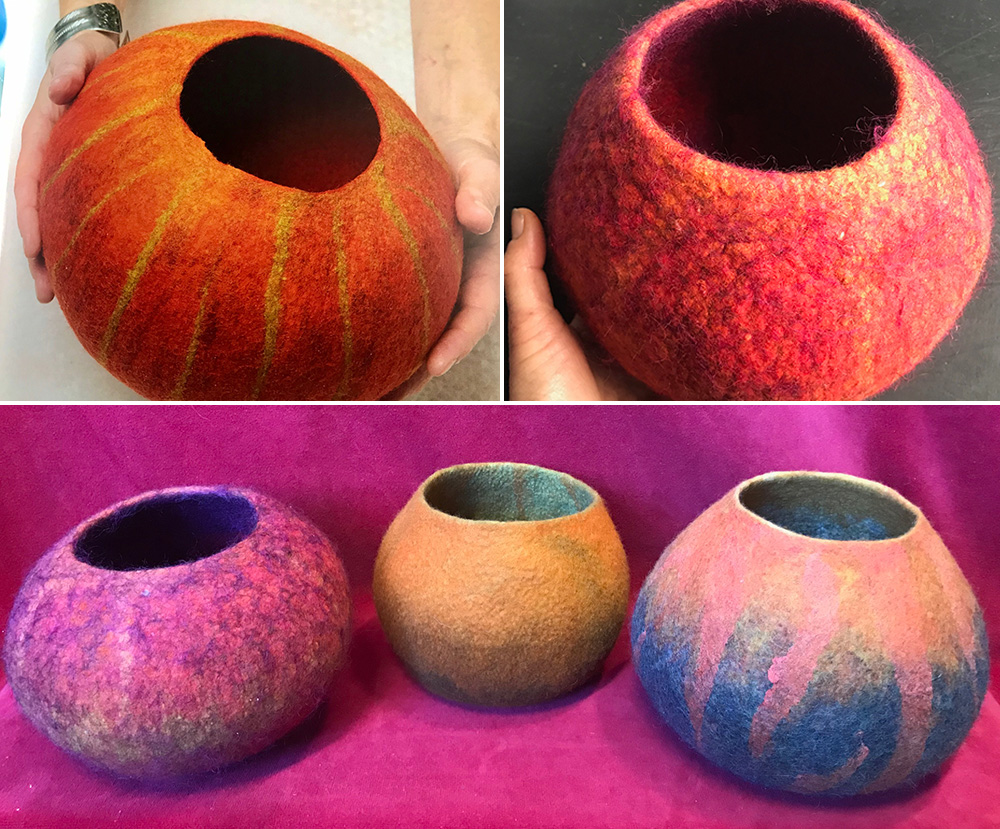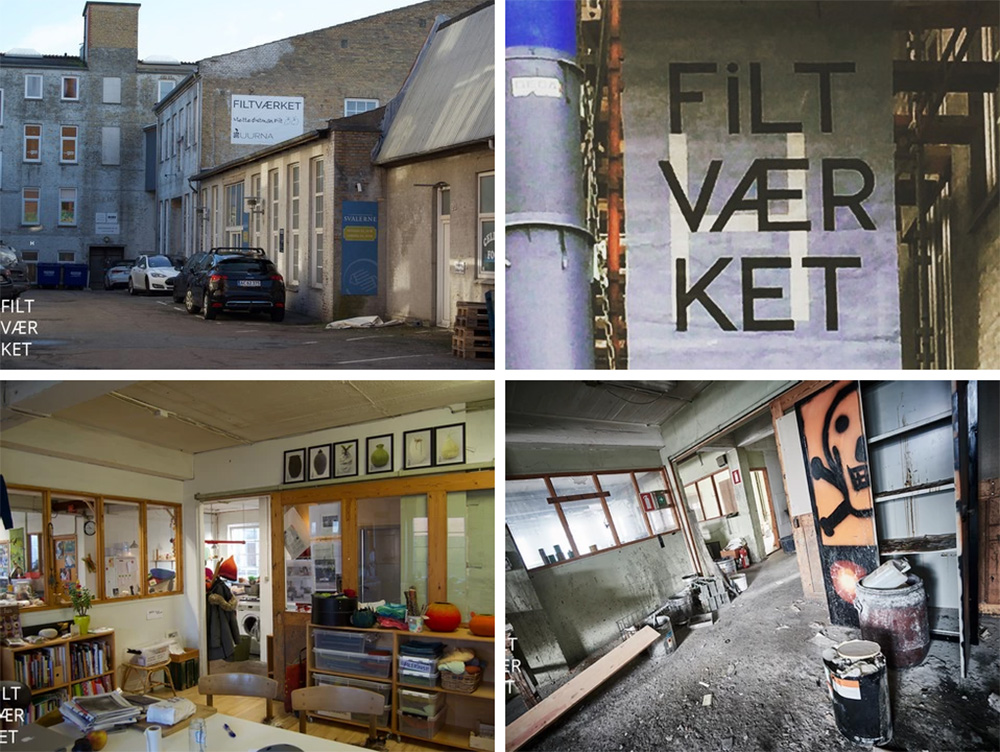
Grundtvik and Transatlantic Felting

Elise Kyllo talks about not allowing a pandemic or an ocean get in the way of an international felting collaboration in her latest blog post.

Mette Ostman and I working on a wet felted vessel via the internet
I have recently met a very skilled felter from Denmark, Mette Ostman. She is a felter, educator and founder of Felt Laboratory and Filt Vaerket (Felt Works) in Odense, Denmark. I don’t know her well, but after just a couple of internet connections, I’m sure we are sisters in the fiber family. It is easy to explain our connection through wool. We both love the freedom and flexibility of working with wool, a sustainable material that can be wet felt sculpted into durable forms of usefulness and beauty. There is another important connection that brings us together. This is a man by the name of Nikolai Grundtdvik, born in 1783 in Denmark. He is credited for beginning the Folkehojskole (Folk School) movement. Grundtvig believed in the education of all people, especially the working class and rural folk, not just the wealthy. His hope was to “enlighten and enliven” people, celebrating the hand work of real life skills while challenging the mind and empowering people. He knew that a healthy democracy was not possible without a society of thoughtful, empowered people. This has evolved into 1000’s of Folk Schools around the world, many of them in Scandinavia and one of them in Northern Minnesota, North House Folk School. A major difference between the Scandinavian schools and US schools, is that Scandinavia schools are multi year long programs as well as short continuing education classes, funded by the government. The U.S. schools are generally run as non profits, funded via grants, donations, creative fundraising, and student tuition. Mette attended a folk school in her 20’s, where a friend introduced her to working with wool and wet felting. Thanks to Mark Hansen, a man who like Grundtvig, believed in the potential and education of all people, North House Folk School was founded in Grand Marais - which is why I am here to learn and to teach, in particular about felting. In the best sense, I hope to be enlightened and enlivened and to share this with others.
Mette Ostman was introduced to me by Karin Flatoy Svarstad from Norway, another talented felter and educator. After a quick look at Mette’s website, I knew she was serious about wool and I was impressed by her educational felting books and her dedication to transforming an abandoned industrial factory into a felting studio where she employs a handful of people who are physically or emotionally challenged. I had planned to spend some time at her Filtvaerket studio while traveling in Scandinavia last summer, but since the cancelling of all travels this year and potentially no travels in 2021, I have been newly motivated to connect with far away felters via the internet. Ohh how much better it would be to be in person and share coffee with our wool, see and feel the felt work she has created, and be immersed in the vibrancy of people coming and going from her studio. Unfortunately our Covid reality demands creative solutions and acceptance of the next best opportunity, via the internet. Thankfully, Mette is open to a transatlantic mentorship.

Our first project together was a vessel, a basic wet felting skill that can be transformed into a 1000 different things: bowls, bags, pillows, hats, slippers etc. In the simplest form it is two layers of wool with a piece of plastic in the middle, called a resist. Through the patient gentle agitation of the fiber when wet, a flexible, sculptable material is created. At the appropriate time, the flat form can be opened up, the resist removed and the fibers are rubbed and rolled with more aggressive agitation and the addition of heat. The flat form becomes three dimensional and the felter determines the final shape of the wool through focused work of shrinking and stretching. In this way, a flat form can become so many things; a pair of slippers that hug your feet, a hat to keep you warm, a tea cozy, a lamp shade, etc. - a three dimensional piece without any seams.

Top Left: Mette’s finished vessel in Merino, Top right: My finished vessel in Merino and C1pelsul wool, Bottom: Not quite satisfied with the first vessel, I made two more. All of them with the same amount of wool but different types of wool caused them to felt differently - a reminder that no two wools felt equally and there are often surprises if you don’t know your wool intimately.
Returning to Grundtvig and our old world connection: After her time at the Danish Folk School, Mette continued to felt and made numerous pairs of slippers for family and friends. She discovered her infatuation with wool as a practical, expressive, sustainable, and sculptable medium. She also discovered the immense time it takes to felt a pair of slippers and decided she would only make slippers for people she loved and would rather teach others how to make slippers for themselves or leave this to a machine. I definitely concur with this statement and so glad she wrote the Guide to Felting Boots!

For years, Mette worked as an educator and in rehabilitation programs. During this time she and two other felting friends, created a shared felting studio where they experimented with wool, taught workshops as they learned more, and began a monthly open house event called Felting Cafe, which is still going 14 years later. Felting became a larger part of Mette’s life and she began to incorporate it into her work with others. She brought felting into her classrooms and she began to hire others to work with her in the studio. After about 15 years of sharing a studio she found that her work needed its own space. Mette had not set out to start her own felting business and studio, but opportunities and the necessity arose and doors were opened at the right time, allowing her to rent the old factory just across the street from the cooperative felting studio.

The old factory turned into a felting studio called Feltworks or Filtvaerket
She has been able to grow into this new space, hiring more people in need of work, and she is able to produce felted goods that she couldn’t otherwise do on her own. She has discovered that her studio is a welcoming and supportive environment and that working with wool is therapeutic, relaxing, and that people feel a sense of success. It is a win/win situation. Fortunately the Danish government subsidizes her employees as part of a work program. Mette enjoys the company and help of many hands to accomplish felting tasks, that by necessity take labor, time, patience, and skills she can teach others. She said that she couldn’t have planned this but that she is on the right path. Like many self employed, creative people I know, she wishes that she made more money for the work she does and had more time for creative work. Mette loves what she does and remains hopeful that she is on the right path to success. I certainly hope to see Filtvaerket flourish and continue to produce beautiful hand made felted work. If I am so lucky, I will be working with Mette in her studio next year, sharing wool, coffee, and stories. Her words of advice for someone who wishes to create a livelihood in felting or other hand work, is “to be steady and stubborn….or to marry well or have another well paying job”. I don’t know Mette well enough to know if she is married and I don’t think she is independently wealthy, but I am quite sure she is talented, steady and stubborn in her work and she is on her own path of success. She is also an inspiration to others following their creative dreams and pursuing a meaningful way of life.